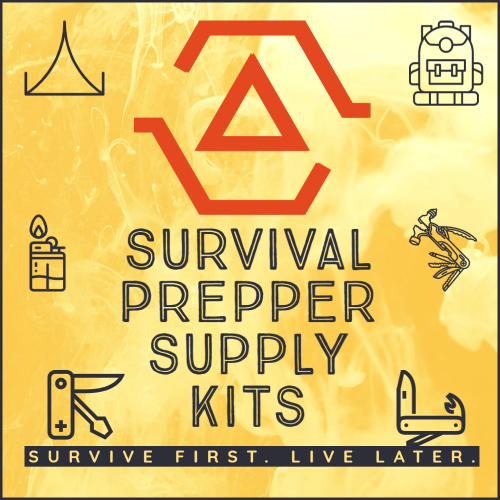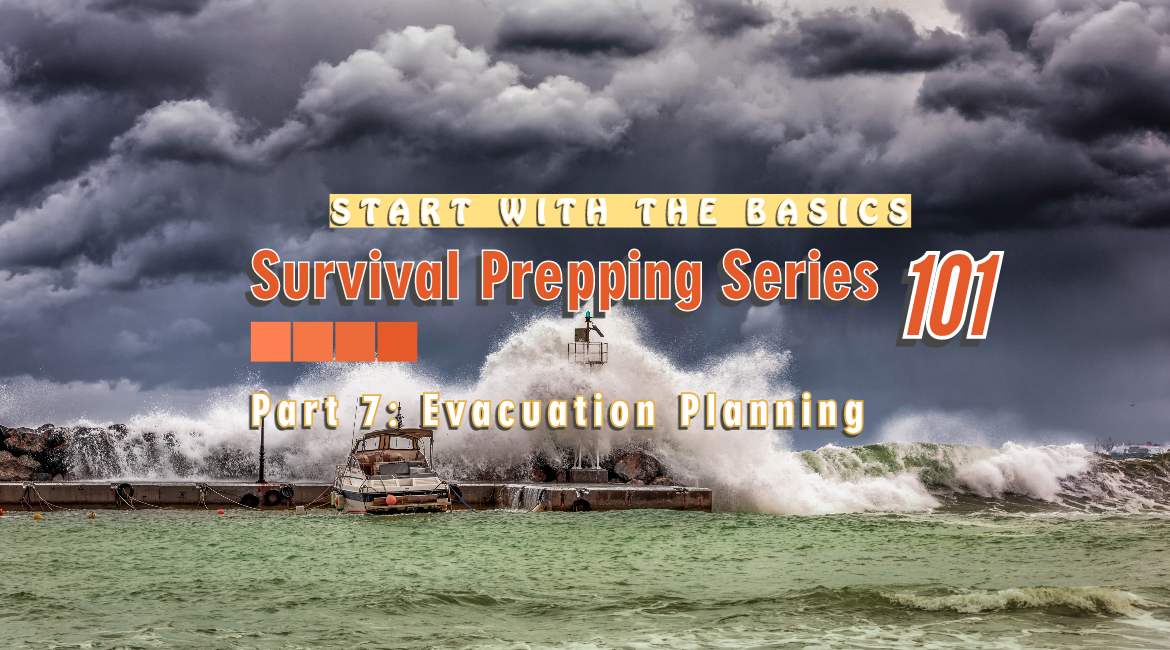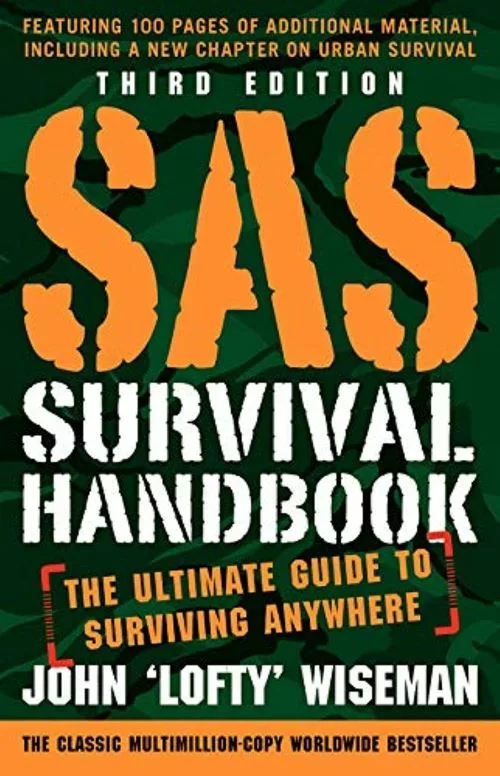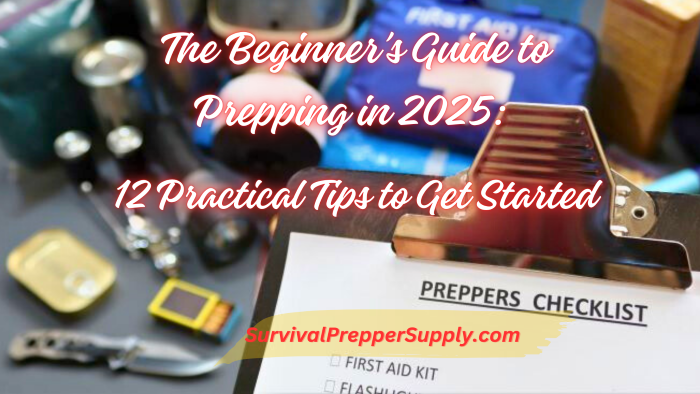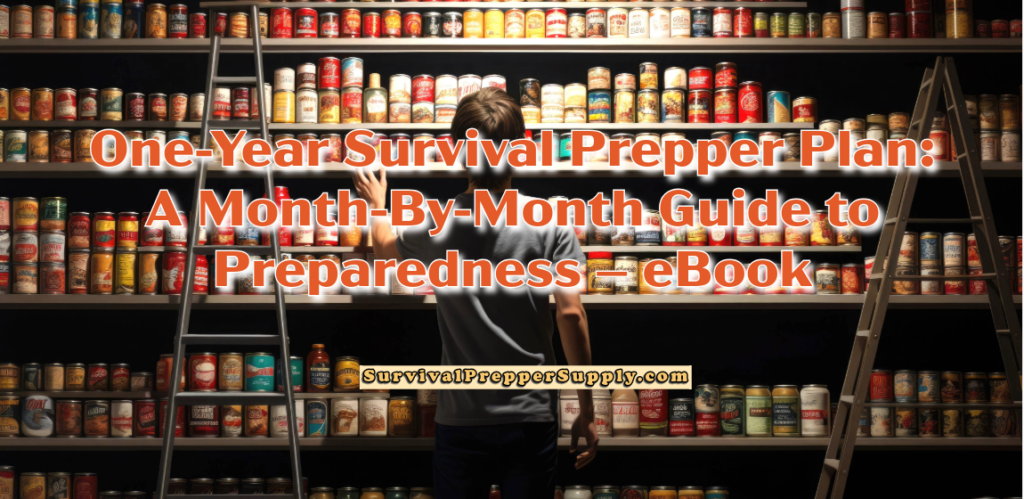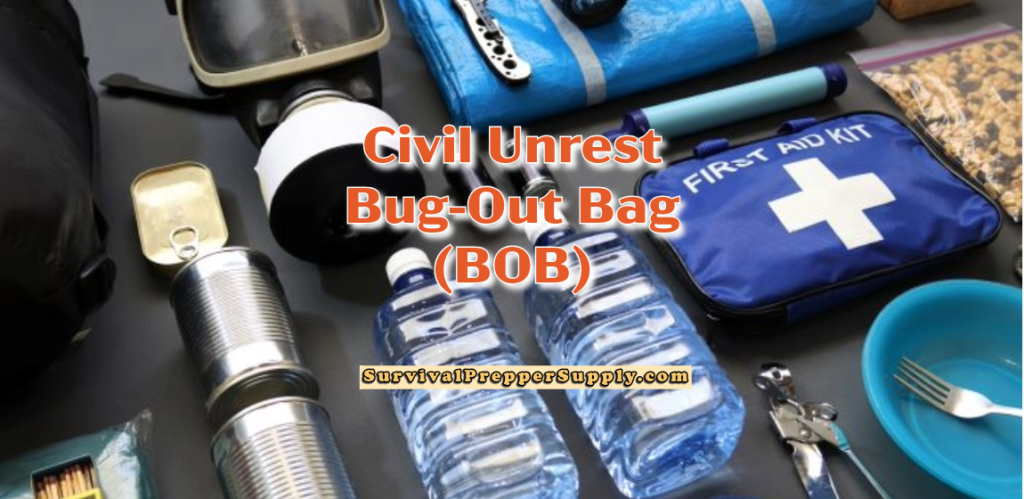Plan Your Evacuation Measures, Part 7 of Survival Basics

Many survival preppers believe that they can stay safely at home in the event of a disaster. However, there are instances where this is beyond your control, and you must leave your current environment.
Many individuals choose not to evacuate during survival scenarios. For instance, many individuals remain in their homes during hurricanes and experience negative consequences.
Please note that this post contains affiliate links, meaning I will get a small commission for qualifying purchases at no extra cost to the buyer.
Related – Show Me the Hurricane Survival Kit Checklist!
It’s crucial to have emergency preparedness measures in place well in advance so that you can quickly evacuate and protect yourself and your family in the event of a warning.

With Canterbury’s guidance, you’ll not only prepare yourself for any climate and situation, you’ll also learn how to use the art of bushcraft to reconnect with nature in ways you’ve never imagined.
Bushcraft 101: A Field Guide to the Art of Wilderness Survival
A New York Times Bestseller Book in Sports and Travel!
The ultimate resource for experiencing the backcountry!
Written by survivalist expert Dave Canterbury, Bushcraft 101 gets you ready for your next backcountry trip with advice on making the most of your time outdoors. Based on the 5Cs of Survivability–cutting tools, covering, combustion devices, containers, and cordages–this valuable guide offers only the most essential survival skills to help you craft resources from your surroundings and truly experience the beauty and thrill of the wilderness. Inside, you’ll also discover detailed information on:
✅ Choosing the right items for your kit
✅ Manufacturing needed tools and supplies.
✅ Collecting and cooking food.
✅ Protecting yourself from the elements..
Attempting to follow the herd or be unprepared in a crisis will result in significant tension and stress. Without prior evacuation plans, you might be unable to make the best judgments.
In addition to possible weather conditions, you may also hear murmurs of unrest in the area that could put your life in danger.
Identify Various Exit Strategies Based on Time
Sometimes, you might have weeks or months to prepare for something you believe might happen shortly. Even in the case of hurricanes, you are often given a few days advance notice before being instructed to evacuate and seek shelter elsewhere.
Related: Survival Prepper Tips for Knowing When It’s Time to Bug Out
In this case, you’ll have time to arrange to stay overnight at a hotel or find shelter with relatives who live inland. You’ll have enough time to pack your belongings and transport them to a safe location so they won’t get damaged in a flood.
You can transport your car to a secure area without getting stuck in a long line of traffic and risking running out of fuel during a storm.
However, some instances develop rapidly, leaving you with only a few minutes to gather your belongings. In certain circumstances, such as during a civil disturbance when roads are dangerous, you may be unable to take your vehicle.
Read this – How to Live in Your Car if You Have To
Have various escape plans based on the amount of notice that you receive before an event. Ensure that your survival prepper supply kit is always prepared, allowing you to swiftly gather essential documents and evacuate if necessary.
Having a plan for bringing your pet along during an evacuation is essential. Some people thoughtlessly abandon their pets, exposing them to danger. Ensure your pets are well-prepared with cages, leashes, food, and other necessary supplies.
Related – Crisis Checklist: Saving Your Pet’s Life When Disaster Strikes
Consider creating a specific survival prepper supply kit, such as a go-bag, with essential items for your children and pets.
SAS Survival Handbook, Third Edition: The Ultimate Guide to Surviving Anywhere
“A classic outdoor manual [that] addresses every conceivable disaster scenario. Don’t leave home without it”–Outside magazine
The ultimate guide to surviving anywhere is now updated with more than 100 pages of additional material, including a new chapter on urban survival.
Revised to reflect the latest in survival knowledge and technology and covering new topics such as urban survival and terrorism, the multimillion-copy worldwide bestseller SAS Survival Handbook by John “Lofty” Wiseman is the definitive resource for all campers, hikers, and outdoor adventurers. From basic camp craft and navigation to fear management and strategies for coping with any disaster.
Have a Plan for Every Person Based on Locations
Usually, people plan their evacuation measures based on everyone leaving their homes together simultaneously. But that’s not always how things play out. Sometimes, you might have one spouse at home, another at the office, and children at school, or even multiple schools, depending on their ages.
Related: S.M.A.R.T. Plans for Survival Preppers, Part I
You might have an entire family spread out across the city, which makes your evacuation measures even more difficult.
You have to plan whether or not it would be safer for some of your family to stay put until everyone was in one place or if you need to have them learn how to get to a safe place on their own where you can all meet up.
Related: S.M.A.R.T. Plans for Survival Preppers, Part 2
This is where it comes in handy to have communication devices, like these long-range walkie-talkies that will work regardless of whether or not your cell phone towers are operational.
There also needs to be contingency plans for what happens if the rest of the family never arrives home and when they should leave to meet up or stay in place.
Find a Safe Haven Based on Transportation
Your entire family needs to know how to evacuate their current location and get to a safe place based on the type of transportation you can access. For example, you may need to escape on foot; a safe place could be another home, a government building, or even the wilderness.
Read this – The importance of knowing your way around
Or, it may even be a situation where you drive to another location or fly out of one city to another to escape a potentially volatile survival event. You may have other types of transportation, such as a canoe or boat, a bicycle, or even a horse.
Identify different evacuation routes and plan for them according to the situation. If it’s a flood, it may be unsafe to escape on foot. Ensure your family knows where to access laminated maps you have printed and how to use a manual compass rather than a digital GPS.
If you are going to evacuate in a car, you must ensure that you have your vehicle topped off with plenty of gas before leaving. Don’t plan on getting it on the way because you may find that everyone else has the same idea and cannot find the fuel you need to continue.
Practice Evacuating Under Duress
Not only do you need to teach your family and yourself what to do during an evacuation, but you need to practice it as if a true emergency is unfolding. It doesn’t help to drive along the same path every day simply and hope that your children are paying attention.
Without instilling fear in anyone, you need to ensure they can get from one point to another, bringing what they need to gather and seeing what it will be like regarding the time required to make those evacuation measures.
Related – Survival Prepper Tips for Knowing When It’s Time to Bug Out
Be sure to explain to everyone that there may be a mass rush all at once to get out of one location into another period, so there could be a large backup or wait time, whether it’s on the highway or somewhere else.
Evacuation plans are nothing new to children. This is something you can safely teach them just as they teach evacuation measures in school, such as what to do during a fire drill or a tornado.
Make the evacuation feel realistic, with a true rush to get things done, so they understand the urgency involved in this event. You also have to make plans for other members of your family who may not be able to carry out these instructions on their own.
You might have someone who is disabled or elderly or too young to escape by themselves, so you’ll have to have a plan where everyone else picks up the slack and assist them during this time.
Read this – Fortitude Ranch: A Survival Community For The Rest Of Us
You want to ensure you will not overreact and yell at everyone during an evacuation event. You have to keep a calm and cool mindset and demeanor so everyone can get through it with as little stress as possible.
Read this: Find a Local Emergency and Recovery Center (Red Cross)
Part of your evacuation plans should include what to do after the immediate threat has passed. For example, not everyone evacuated during a hurricane can return home and live as usual.
You want to have your resources printed out so that you know what to do if it is unsafe for you to return home. Or if you can go home and find damage to your property and belongings.
Read next – Survival Prepping 101 Series Part 8: Get Your Finances in Order Early On
I’m the daughter of 2 original survivalists who moved from the north to sunny Florida. My mother, along with her parents, bought 30 mostly uncleared acres in 1938. The first home was made of pecky-cypress and built by a house-raising. My mother raised 10,000 chickens.
My divorced mother met and married my father in 1948. From pine trees on our property, he hand-built a log cabin. He also built a tarpaper-lined 65’x45′ pool with duck pond overflow. We had an artesian well for our water and powering our hand-built waterwheel for the pool. He built a substantial cantilevered roof workshop with a car pit in the massive cement floor.
Since my early teens, I have read a ton of books about survival, prepping, the bomb, an apocalypse, homestead living, and SHTF situations. As an adult, I continue to read sci-fi, survival prepping, and science. I practice a prepper lifestyle albeit a bit modified, read a lot, buy a lot, pack/store a lot of anything survival related.
Read my About Me post for more details on our self-sufficient living. I lived there until I went to college in 1968.
My SurvivalPrepperSupply.com blog strives to educate individuals on coping with natural and human-caused disasters using article posts about preparing for emergencies.
